It’s a not-so-classic tale of a romance gone horribly wrong.
“Jade Maiden, a goddess, fell in love with the Great King, a mortal,” says Wuyishan tour guide Yuan Lan.
“An envious monk, Iron Slab, snitched to the Heavenly God, who punished them by turning them into two mountains and placing the Iron Slab Peak – we called him the ‘home-wrecker’ – in between them.”
Lan is telling us the ancient Chinese folklore behind the two most famous mountains in Wuyishan, in Fujian province in southeast China, as we climb up Heaven Tour Peak for a panoramic view of this rocky “love triangle.”
Wuyishan, or Mount Wuyi, is peppered with mythical stories like this thanks to unbelievably shaped mountains, romantic rivers and mysterious monasteries hidden in between.
Inscribed on UNESCO’s World Heritage list in 1999, Wuyishan features the country’s largest intact forest.
Natural scenery aside, Wuyi is where some of the most expensive teas in the world are grown. It’s now home to the world’s largest theater, too.
From where to hike to what tea to drink, here’s an essential guide to Wuyishan, one of the most beautiful places in China:
Best hike in Wuyishan: Heaven Tour Peak
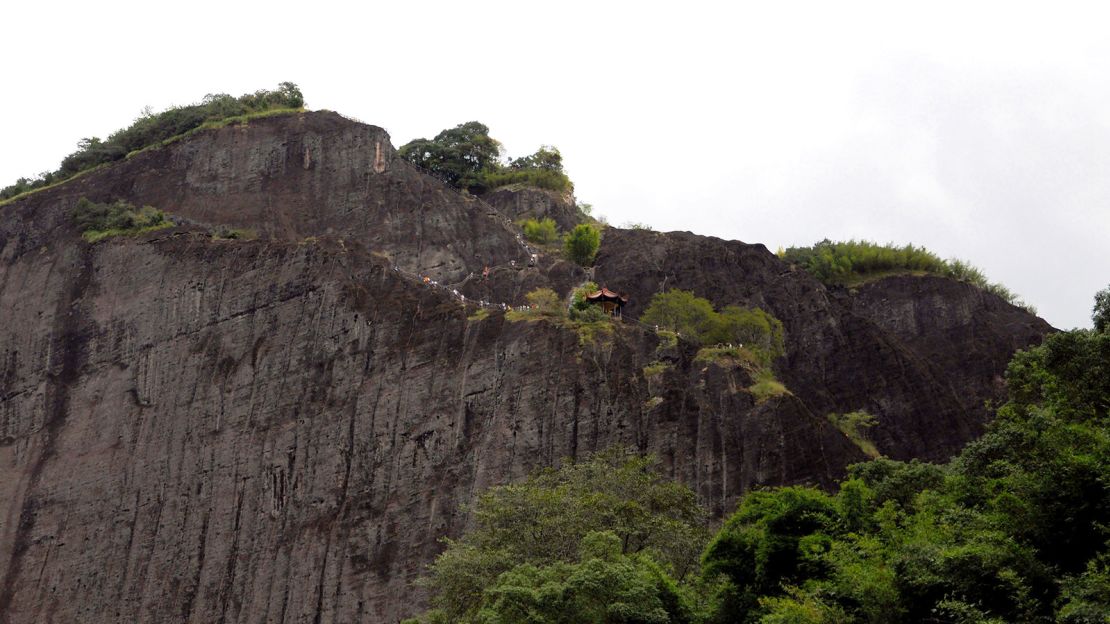
Creeping up to heights of 410 meters above sea level, the Heaven Tour Peak (or Tianyoufeng) trek takes place on a sheer cliff side.
It’s the best vantage point in Wuyishan, overlooking the meandering Nine-Bend Stream (Jiuquxi), as well as neighboring tea farms and temples.
The trek is paved with about 800 vertiginous stone steps uphill and more than 1,000 downhill.
The narrow path is secured with handrails and dotted with rest stops and viewing pavilions.
It takes approximately three hours to finish, depending on foot traffic.
Easiest way to tour Wuyishan: Bamboo rafting at Nine-Bend Steam
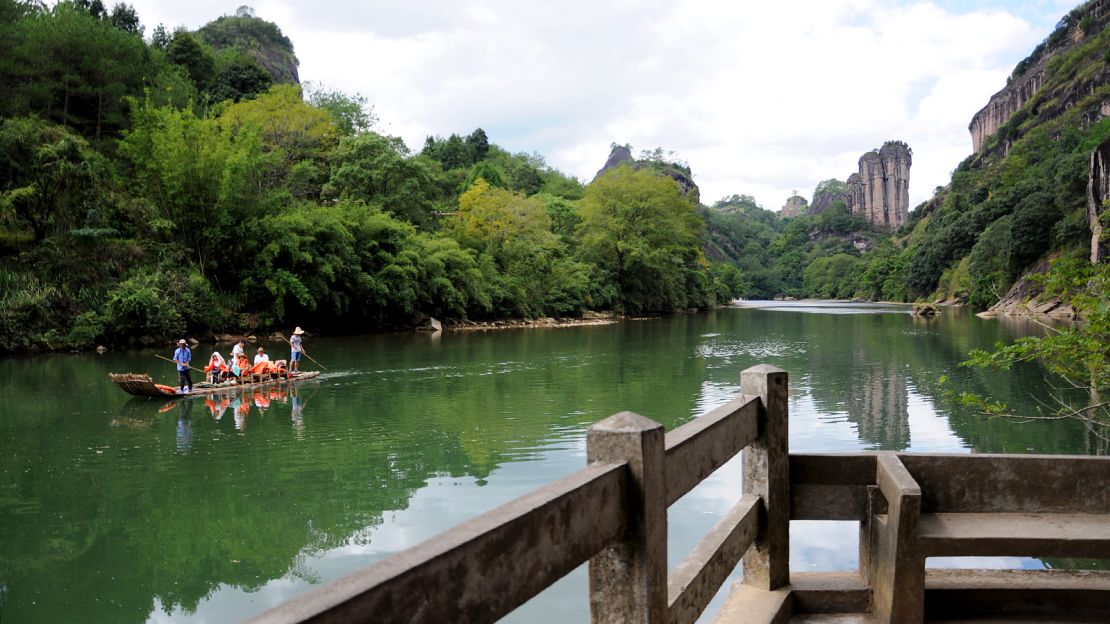
A ride on a bamboo raft is one of the best ways to start or conclude a trip to Wuyishan.
The nine bends of the pristine stream – hence the name – run through some of the most iconic spots in the park.
The two lead rafting guides, often in straw hats and traditional attire, are great at identifying mountains or pointing out the most photogenic spots – including rocks that resemble King Kong and the Sydney Opera House.
If you understand Mandarin, it’s worth tipping the rafter RMB20 ($3) for a more detailed explanation.
A raft seats five to six passengers. You’ll be teamed with other passengers if you’re in a group smaller than five.
The ride lasts between 90 minutes to two hours and is mostly unsheltered so a hat and sunscreen are advised. Take off shoes to avoid getting them wet.
Most beautiful hidden temple: Zhi Zhi An
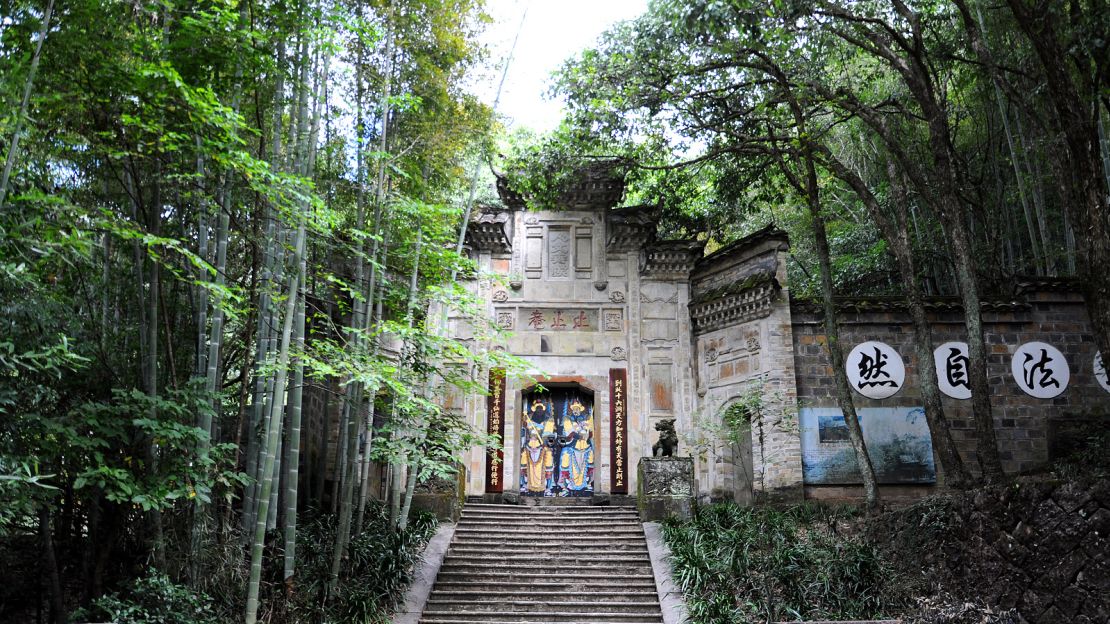
Hidden away from the main tourist spots in the park, Zhi Zhi An is a tranquil Taoist temple flanked by bamboo and other trees.
As you enter through the entrance to Great King Peak and Spring Garden, there’s a river-hugging path that leads to the beautiful stone gate of Zhi Zhi An.
The buildings inside the temples were destroyed and rebuilt a few times throughout the centuries but the temple boasts a history that dates back to more than 1,700 years ago.
Bonus: On the way to Zhi Zhi An, you’ll come across a small riverside viewing platform – the best place to photograph bamboo rafts floating on Nine-Bend Stream with Jade Maiden Peak in the background.
Most stressful cave walk: A Thread of Sky
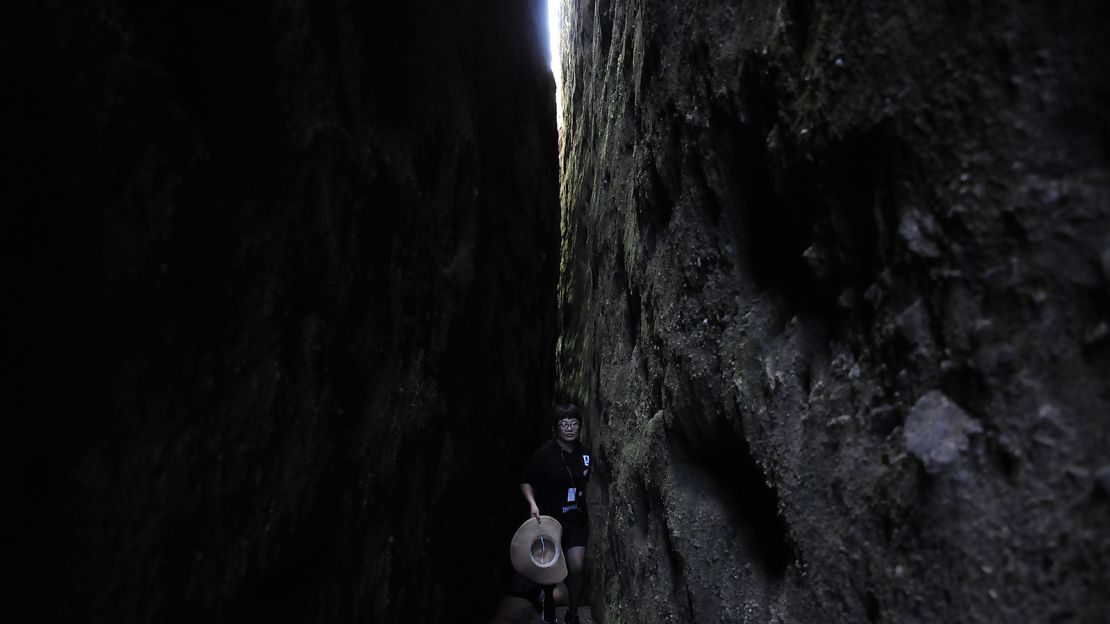
Dubbed the weirdest cave in Wuyishan, “A Thread of Sky” is a fissure cave with a narrow crack that opens towards the sky.
A path of steps allows visitors to climb through the crack.
A warning sign at the entrance of the cave informs visitors that the narrowest part of the cave is about 35 centimeters in width.
Whenever someone is holding up the line, visitors behind often yell: “Are you stuck? Take a deep breath and suck in your belly!”
It’s not recommended to visit during and after rain as the path is dark and can get slippery.
Tea that costs more than gold: Da Hong Pao

As the birthplace of Oolong tea, Wuyishan has hundreds of varieties of Oolong teas, but none as famous as Da Hong Pao (or Big Red Robe).
Sitting inside the park’s Da Hong Pao scenic area, the six small trees hanging off the cliff in front of a tea house are the mother trees of Da Hong Pao.
Dubbed the most expensive tea in the world, 20 grams of leaves from these branches were once auctioned for more than RMB180,000 (or $27,000).
Harvesting from the mother trees of Da Hong Pao has been forbidden since 2006.
They were once guarded by armed security and are even insured.
At the start of each harvesting season, a small shrine is set up before the trees, where tea farmers come and pray for a good harvest.
Sample and buy Oolong tea like a pro
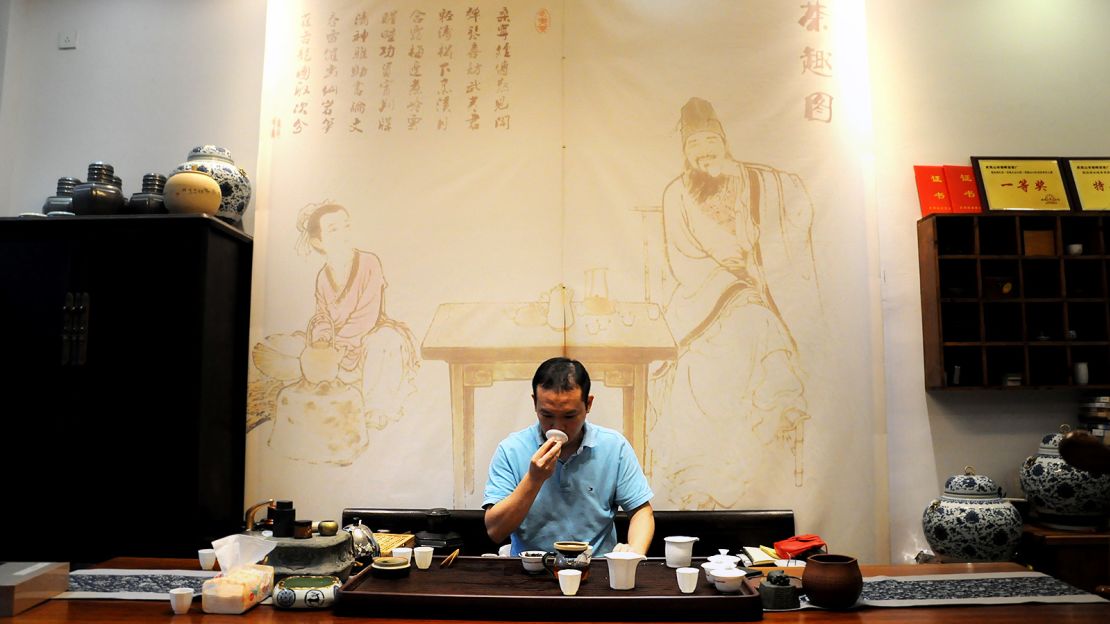
Visitors can buy prepackaged tea leaves in retail shops or pop into one of the ubiquitous tea houses around the Wuyi resort town to taste the teas before buying.
Quality and prices vary among shops.
Chun Hui Tea House (67, Xiaping Road, Sangu Resort Area, Wuyishan) sells retail and wholesale tea leaves harvested from the owner’s family farms in the region.
“Wuyi tea is unique for its cliff soil aroma,” says Qiu Yi, Chun Hui’s owner and a fifth-generation tea maker.
Qiu is keen to give tea lectures to beginners and showcase his collections of antique tea pots and tea-related readings.
“The processing of the tea in Wuyi also differs from other regions, giving Wuyi tea a different fragrance and a long-lasting taste.”
After harvest, fresh tea leaves require four months of processing – they’re baked for more than a month – before they’re ready to serve.
In addition to Da Hong Pao, Shui Xian (Narcissus) and Rougui (Cassia) are two Wuyi cliff teas recommended for beginners.
Shui Xian is elegant and smooth. Rougui has a spicy and fierce kick.
Tea at Chun Hui ranges from $45 per 500 grams to $450 – each brew takes about 8 grams of tea leaves.
Biggest theater on earth: Impression Da Hong Pao
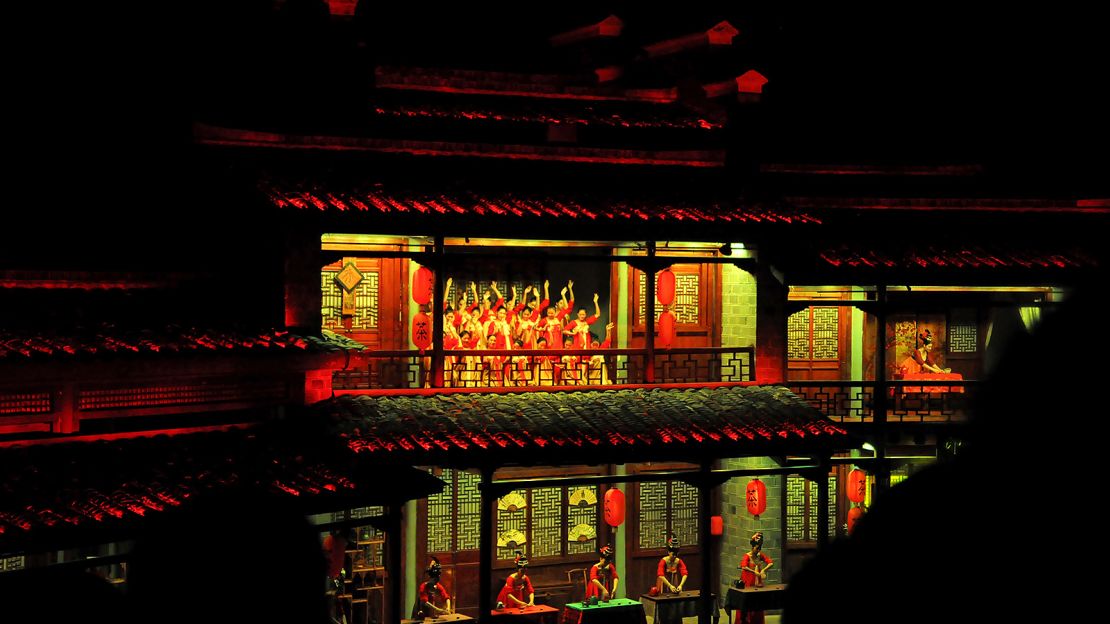
With Zhang Yi-mou (director of “House of Flying Daggers” as well as the opening and closing ceremony of the 2008 Beijing Olympics) as one of the producers, Impression Da Hong Pao is guaranteed to be shamelessly extravagant and aesthetic.
Calling itself the biggest theater stage in the world, the performance features a 360-degree outdoor stage – starring the actual Great King Peak as a part of the background.
The 2,000 seats in the center rotate a few times to showcase the panoramic views during the show.
Themed on the legend of Da Hong Pao tea as well as the folklore of Wuyishan, the $30-million show runs for about 75 minutes and is packed with jaw-dropping effects and choreography.
It’s in Chinese only but those who don’t understand a word of it will still appreciate the show.
Other practical tips

The all-inclusive day ticket isn’t all-inclusive: Tickets include entrance to all seven scenic areas and shuttle buses between areas. But the fee doesn’t include a bamboo rafting tour.
Touring Wuyishan can easily take two to three days: Wuyishan Nature Reserve has seven official ticketed scenic areas (including Great King Peak, Jade Maiden Peak, Nine-Bend River, Da Hong Pao Scenic Area) and many more unofficial attractions (such as Zhi Zhi An).
Private vehicles aren’t allowed inside the park: Each scenic area is connected by shuttle buses. Let the drivers know your destination when you board the bus.
Use public buses, taxis or hire a DiDi outside the park: DiDi is China’s version of Uber. English interface is available.
Ordering tickets: It’s easier to pre-order your entrance ticket, bamboo rafting ticket and theater ticket through your hotel or B&B before your arrival.






















